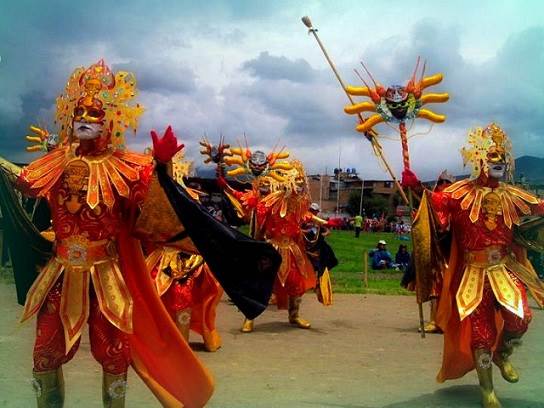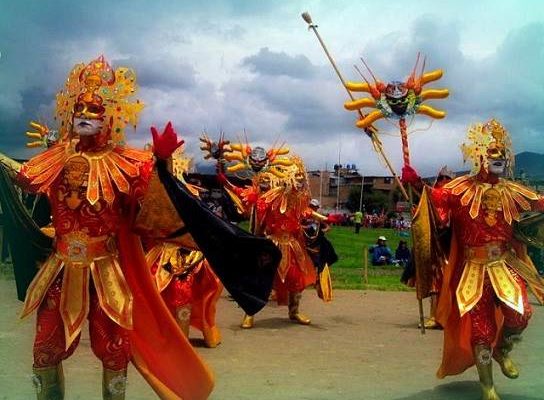During the month of February, the well-known carnivals are celebrated in Cajamarca. “Carnivals” is plural since this festival is celebrated in as many diverse ways as there are towns in the department of Cajamarquino. The festival of carnival in Cajamarca dates from 1930, the year when it became fashionable to exhibit carts decorated with flowers and colors accompanied by the most beautiful women of a given area. With the passage of time, the celebration was changed, and now new activities have been integrated. But what stands out the most is the increase in the street decorations, giving free rein to the villagers’ creativity.
While all of these processions are going on with the countless decorated carts, the people entertain themselves in a big party. The music and the dances are accompanied by typical games involving water, streamers, perforated paper, and talc, among many other elements. It all depends only on the creativity of each person.
What is highlighted the most during this celebration is the creativity of the participants to create the lyrics to the improvised songs. Among these creations we find the matarinas, bawdy verses which lovers sing to their women. One of the most awaited activities is the competition between the five neighborhoods of Cajamarca, in which each one presents the best of their musical repertoires.

Among the typical products of the region are: wine from Cascas, hydrangeas from Chugur, custard apples from Cunish, guitars from Namore, limes and oranges from Coyna, healers from Corisogorna, and the unparalleled sombreros from Celendin and Asuncion, which are presented during the festival. Each one of these products is a small sample of the tradition and culture of the area.
The arrival of the Ño Carnavalón is a very famous part of this celebration. It is nothing other than the representation of the spirit of the carnival. The doll, accompanied by a happy and entertaining crowd as well as their songs and dances, is paraded through the streets of the city amidst an atmosphere of joy at the beginning of the carnival. According to tradition, during this celebration, Ño carnavalón ends the festivity by being burned, veiled, and buried by the villagers.
This celebration is full of the culture and tradition of the customs of Cajamarca, as stated so well by Jose María Arguedas, a recognized Peruvian author who made great contributions to indigenous literature: “It is the greatest festival of the Peruvian Indians (…) and their music is the most beautiful of all Peruvian folklore (…)”
Each of the different festivities of the carnival reflect the mix of cultures and above all the cordiality, creativity, and happiness that the Peruvians put into the celebrations in order to celebrate the carnivals to the fullest.



